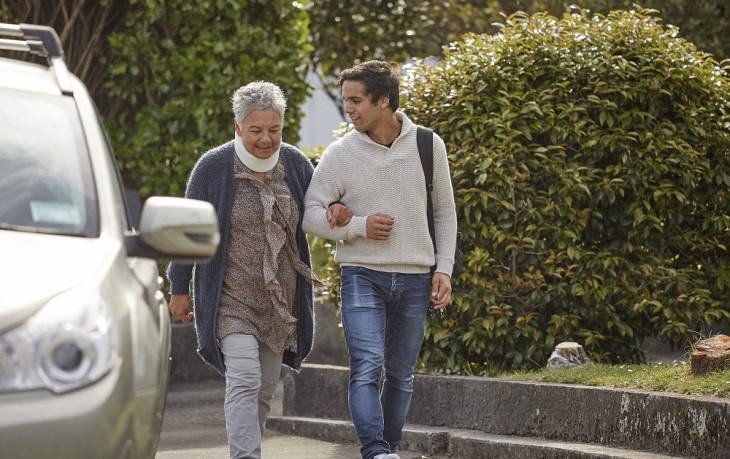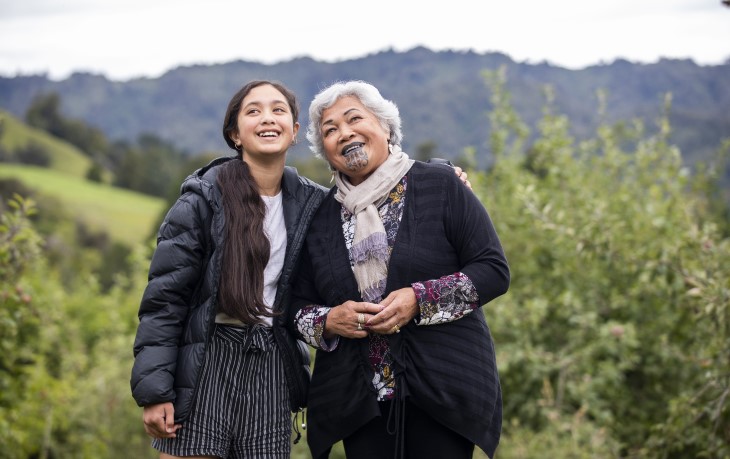Preventing fragility fractures

New Clinical Standards have been launched to prevent older New Zealanders who suffer a fracture from breaking other bones in the future.
Every year around 30,000 fragility fractures occur in New Zealand, predominantly among people aged 50 years or older.
A fragility fracture is defined as a fracture resulting from low trauma, such as a fall from standing height. Fragility fractures impose a significant burden on the people who sustain them.
The also have an impact on their family members, whānau and carers, and the health and social care system. They are a preventable injury.
Osteoporosis New Zealand has today published new Clinical Standards for Fracture Liaison Services. The new Clinical Standards underpin a nationwide strategy.
Providing healthy futures for seniors
They aim to prevent older New Zealanders who sustain a fragility fracture from breaking other bones in the future.
The Fracture Liaison Services (FLS) across New Zealand are focused on delivering a world-class service. This is aligned with International Osteoporosis Foundation Capture the Fracture® Best Practice Framework.
The second edition of the Clinical Standards for FLS in New Zealand will play a vital role. It will support this nationwide clinical quality improvement effort.
This includes treatment with safe and effective PHARMAC funded treatments for osteoporosis. It also includes referrals to local falls prevention services.
Every year ACC accepts around 155,000 claims for falls and fracture-related injuries among New Zealanders aged 65 years or over. These injuries cost $195 million to help people recover. This represents a 47 percent increase since 2013.
We estimate that, by doing nothing to prevent these injuries, the cost of these falls and fractures would reach $400 million by 2035.
Our commitment to Aotearoa
ACC Targeted Investment Manager Paul Kennedy says we are committed to Fracture Liaison Services. We want to reduce the incidence and severity of falls and fractures in New Zealand.
“International evidence tells us that Fracture Liaison Services play a critical role in identifying and addressing the underlying issues that could lead to subsequent fractures,” says Kennedy.
We are working with District Health Boards across New Zealand.
We are embedding world-class Fracture Liaison Services into the country’s health system.
“With the population of over 65s expected to continue growing rapidly between now and at least 2038, it makes sense to invest in a programme that can enable over 65s to remain fit and well,” says Paul.
“In doing so, we reduce the growing demand on New Zealand’s health system.”
The most common skeletal sites of fragility fractures are the hip, wrist, humerus, pelvis or spine. Hip fractures are often considered the most debilitating fragility fracture.
Almost half of the people who attended hospital with a hip fracture had broken another bone in the months or years before that injury.
The research also shows that around half of people who sustain a first fragility fracture at any skeletal site will go on to break another bone. The risk of further fractures rises exponentially with each new fracture.
Implementing a global model for prevention
The Fracture Liaison Service model has been developed and implemented throughout the world.
It ensures when a person needs urgent care with a fragility fracture that they receive the interventions they need. This is to reduce their risk of future fractures.
Put simply, Fracture Liaison Services aim to make the first fragility fracture the last. New Zealand is now part of the new Australian and New Zealand Fragility Fracture Registry.
This will enable Fracture Liaison Service teams to benchmark the care that they provide. They will be able to do this against the Clinical Standards in real time.
Christine Gill is the Executive Director of Osteoporosis New Zealand. She says the Clinical Standards were subject to a broad consultation process.
The consultation included learned societies and government agencies in New Zealand. It also included leading international organisations in the fragility fracture prevention arena.
“We are delighted that 17 organisations have endorsed the Clinical Standards,” says Christine. “This illustrates the broad consensus among healthcare professionals regarding the benefits that Fracture Liaison Services bring to patient care.”
Dr. Philippe Halbout is the Chief Executive Officer of the International Osteoporosis Foundation. He commended the progress.
“This nationwide effort to develop universal access to IOF Gold Star accredited FLS is a fantastic step forward for the care of people with fragility fractures in New Zealand,” says Philippe.
Fragility Fractures: the facts
- Every year around 30,000 fragility fractures occur in New Zealand
- ACC accepts around 155,000 claims each year for falls and fracture-related injuries among New Zealanders aged 65 years or over. These injuries cost $195 million to help people recover.
- Hip fractures are considered the most debilitating fragility fracture.
- Less than 50 percent of people who survive a hip fracture will walk unaided again. For many people they will never regain their former degree of mobility.
- Around 60-80 percent of people need help with activities such as dressing, shopping or driving one year after their accident.
- Around 10-20 percent of people who sustain a hip fracture will be admitted to a care home in the year after fracture.




